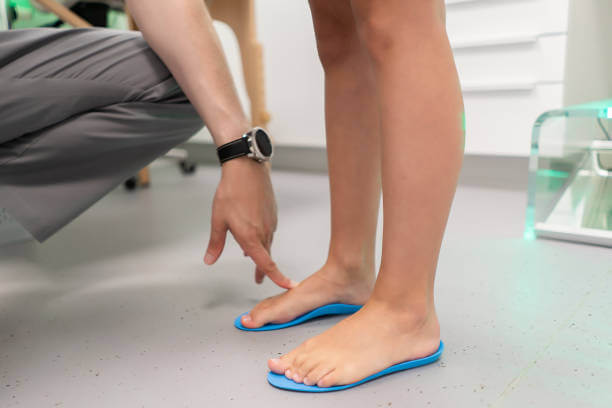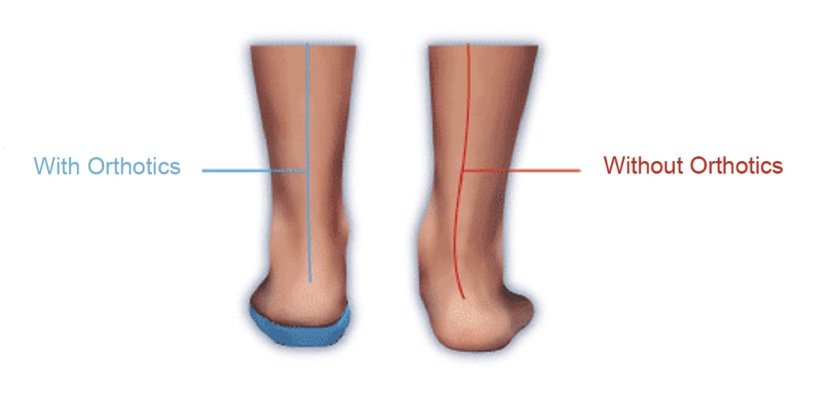Understanding Boot Layout and Fit Dacono CO
Understanding Boot Layout and Fit Dacono CO
Blog Article
Custom Footbeds for Improved Fit Westminster CO
Choosing the proper ski boot can significantly have an effect on your skiing expertise, impacting each comfort and performance. Understanding the essential components concerned in making this alternative is significant for skiers of all levels, from novices to seasoned consultants. The proper ski boot enhances management over your skis, allowing for better maneuverability on numerous terrains.
One of the primary concerns in choosing a ski boot is the fit. Ski boots ought to fit snugly, however not uncomfortably tight. It’s essential to try on various models and types, as each has its personal distinctive shape and sizing. A good fit will decrease motion inside the boot, decreasing the prospect of blisters and ensuring that your energy is transmitted efficiently to your skis.
Analyzing Foot Shape for Ski Boot Fit Dacono CO
Keep in mind that virtually all ski boots come in several widths. The length of the boot is just one element of fit; the width will create a extra personalised expertise. Boots are sometimes categorized as narrow, medium, or wide, catering to completely different foot shapes. Your foot shape will largely dictate which width is greatest fitted to you, impacting how comfy you're feeling during your skiing classes.
Next, the flex index should be taken under consideration while choosing the right ski boot. Flex refers to how stiff or delicate a boot is, with stiffer boots providing more management and response. On the opposite hand, softer boots are extra forgiving and easier for beginners to handle. Advanced skiers may choose stiffer models for optimum performance, whereas these new to the sport could discover softer options more inexpensive and cozy.
The intended ski fashion additionally plays a vital position in your selection - Ski Boot Fit for Advanced Skiers Thornton CO. Are you planning on skiing mostly on groomed trails, or do you aspire to enterprise into backcountry skiing? Freestyle skiers typically choose softer boots, permitting for flexibility throughout jumps and tips. Alpine skiers may go for stiffer models that promote stability and responsiveness on hard-packed snow or icy situations
Is Bootfitting Really Necessary? Superior CO
Another necessary facet is the boot's thermal insulation and the method it keeps your toes heat during extended exposure to chilly. Insulation materials vary considerably, and some boots include added know-how for warmth retention. If you’re skiing in frigid circumstances, choosing a boot equipped for heat can drastically enhance your enjoyment on the slopes.
When assessing the liners of the ski boot, it is wise to grasp that this element can drastically change the fit and really feel of your boot. Many trendy ski boots come with heat-moldable liners that conform to the form of your foot over time. This customization can lead to enhanced comfort and improved performance, because the liner provides higher support on your foot and ankle.

Buckle methods are one other factor not to overlook whereas choosing ski boots. The number of buckles impacts how securely the boot fits and the way easily you probably can take it on and off. Boots with extra buckles provide a extra adjustable fit and better safety. However, those with less complicated systems could additionally be easier for novices to manage. Consider which elements matter most to you based on private choice and experience stage.
Ski Boot Fit Tips for Comfort Westminster CO
Selecting the best ski boot dimension may also be difficult by differences in brands. Sizes can range, so it’s advisable to consult measurement charts specific to each model you try on. Understanding your foot's measurements can guide you towards a more fitting selection. This knowledge might help you keep away from choosing a boot that is either too massive or too small, both of which may detract out of your skiing experience.
It’s important to verify for extra options that some boots provide, such as stroll modes or interchangeable soles. Walk modes enable for easier movement when you’re not in your skis, a fantastic boon for those who prefer to hike or transfer around the lodge. Interchangeable soles can make the boot extra versatile, permitting it to adapt to various sorts of snowboarding and even walking.
Try to seek the steerage of skilled retail professionals when navigating the plethora of choices available. They can provide insights and suggestions primarily based on your skiing type, talent stage, and private preferences. Their expertise will help filter the acceptable boots that match your needs, guiding you thru the nuances of fit and performance.
Advice for First-Time Ski Boot Buyers Lafayette CO
In conclusion, the search for the right ski boot combines varied important components that require careful consideration. Fit, flex, style, insulation, liners, buckles, size variations, and additional features all play a task in your choice. Spending time to analysis and verify out different models can make a considerable difference in both performance and comfort, making certain a extra gratifying day on the slopes. Prioritizing these components and in search of skilled recommendation will equip you with the mandatory instruments to make an knowledgeable alternative, resulting in improved snowboarding experiences for years to come back.
- Assess your ability stage; newbie skiers sometimes want softer flex boots, while advanced skiers benefit from stiffer options for better control.
- Prioritize fit over model; a well-fitting boot is essential for comfort and performance, whatever the producer.
- Consider the boot’s final width, because it influences the quantity of your foot; a narrow last enhances precision for narrow ft, while a wide final supplies comfort for broader toes.
- Pay consideration to flex index scores; each boot has a unique flex rating that matches your skiing fashion and bodily attributes, affecting responsiveness and luxury.
- Explore custom insoles; they will significantly improve comfort and prevent issues corresponding to blisters and chilly ft by providing better arch assist and weight distribution.
- Test boots in-store with acceptable ski socks; make sure the fit is comfortable but not painfully tight, permitting for slight wiggle room and correct circulation.
- Look for heat-moldable liners; these could be custom-made to the shape of your foot for enhanced comfort, particularly when you experience any pressure points.
- Consider the type of skiing you plan to do, whether or not it is alpine, backcountry, or freestyle, as each requires specific boot traits for optimum performance.
- Check for buckling methods and features like energy straps; a great closure can improve fit, cut back movement, and enhance total skiing efficiency.
- Don’t neglect about liner materials; different supplies provide varying ranges of warmth, moisture-wicking, and cushioning, instantly impacting your snowboarding experience.undefinedWhat dimension ski boot should I choose?
Choosing the right dimension ski boot is crucial for comfort and performance. Measure your foot size in centimeters and consult a ski boot measurement chart, typically a half-size smaller than your common shoe size. Always strive boots on with the right ski socks for an correct fit.
How do I know if the ski boot is merely too tight or too loose?
Basics of Ski Boot Architecture and Fit Broomfield CO
A well-fitted ski boot ought to really feel snug however not painfully tight. Your toes should just contact the front of the boot when standing upright. When you bend your knees ahead, your toes should pull barely away from the front. A loose boot can result in poor control and blisters.
What is the distinction between soft and stiff ski boots?
Analyzing Foot Shape for Ski Boot Fit Golden CO
Soft ski boots supply more flexibility and luxury, making them suitable for newbies or casual skiers - Preparing for Outdoor Boot Fitting Arvada CO. Stiff boots provide higher responsiveness and control for skilled skiers on challenging terrain. It's important to choose based in your skill degree and skiing fashion
Should I consider boot width when choosing ski boots?
Yes, boot width, also referred to as "last," is necessary for comfort. Ski boots come in different widths—narrow, medium, and wide. Measure the width of your foot and consider each model's fit to make sure comfort and reduce pressure points whereas skiing.
What kind of ski boot is best for my snowboarding style?
Exploring Customization Options for Fit Westminster CO
Consider your skiing type: if you plan to experience groomed trails, an all-mountain boot is ideal. Backcountry skiers ought to go for lighter, more versatile choices. Freestyle skiers benefit from gentle boots for greater maneuverability. Match the boot type to your skiing desire for optimal performance.

How necessary is custom fitting for ski boots?
Ski Boot Fitting Supplies List Golden CO
Custom fitting can significantly improve comfort and performance. Professional boot fitters can adjust your boots to your foot shape, addressing specific pressure points and guaranteeing a better fit. While not important, it’s helpful, especially for many who ski regularly or have foot issues.

Is it worth spending extra on higher-end ski boots?
Higher-end ski boots typically characteristic advanced supplies and technology, providing greater comfort, performance, and sturdiness. If you ski regularly, investing in a quality pair can improve your expertise and assist you to develop higher skills. Consider your snowboarding frequency and magnificence when deciding.
Understanding Pressure Points in Ski Boots Niwot CO
What options should I search for in a ski boot?
Look for options corresponding to heat-moldable liners for custom-made comfort, adjustable buckles for a greater fit, and waterproof materials to keep your toes dry. Flex rating, insulation, and weight are also crucial components that should align together with your snowboarding needs and circumstances.
Basics of Ski Boot Architecture and Fit Lyons CO
How do I preserve and store my ski boots?
Always dry your ski boots after each use to forestall moisture buildup, which can lead to odors or deterioration. Store them in a cool, dry place away from direct daylight. Regularly check the liners, buckles, and soles for wear and tear to make sure they continue to be in good condition.
Boot Fitting for Touring Tips Boot Mechanics in Ski Boot Fitting Report this page